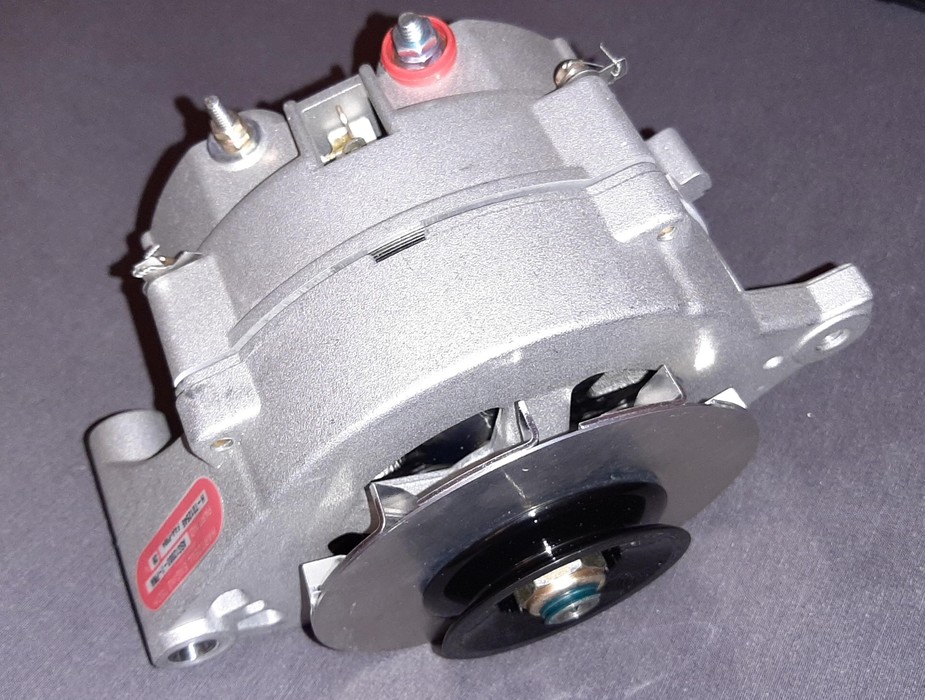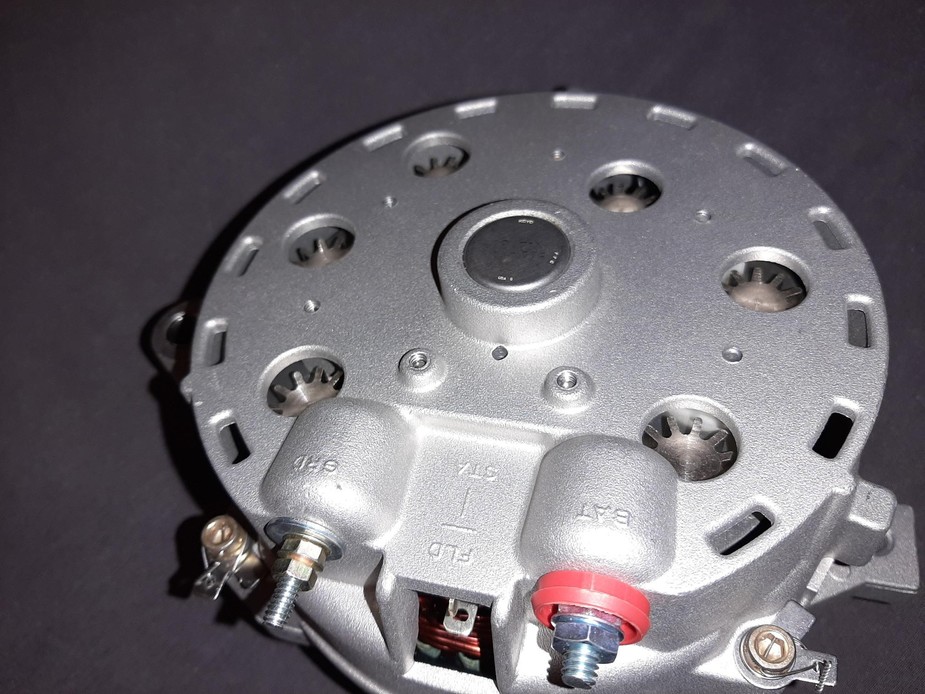One TB20 owner in the US has installed the Plane Power AL24-P70 and didn’t appear to get the strong disapproval of anyone on the US Socata owners’ site 
So it seems legal – at least on an N-reg.
Here (Sandelving Germany, not AircraftSpruce US) is the following statement

I therefore wonder if Silvaire’s post above remains applicable today, 6 years later? The rationale is that LW14324 (which is Socata-certified as an alternative) is PMAd for the AL24-P70. Hartzell have reportedly confirmed this logic.
The TB20 owner reports that charging starts at 750 rpm which is a massive improvement on the ALU-8521 which starts at 1100rpm.
On the US Spruce site it lists at a better price but probably not by the time you pay VAT and shipping.
For the TB20, you also need a Tension Arm Hartzell/Powerplane PN 10-1012.
Hi, reviving this.
I had an alternator problem yesterday, and while I still need to troubleshoot, I am considering the FLX.
First the experience was shortly after take-off before gear retraction and mostly seamless although I switched off lights, GPS2 and switched Aspen to internal battery to alleviate the load. Symptoms were a red batt discharge light (>10A) during gear retraction and the stby alt on light.
Second, despite the heavy load with a fairly discharged battery (read third below) , and subsequent LDG retraction, contrary to previous reports herein, the B&C vacuum-mounted stby alt kicked in automatically as advertised. and only protested (“reduce load” warning light when exceeding 20 amps) during LDG retraction. Once battery was charged 10 mins later (at reduced bus voltage of 26V as set on the stby controller) , I turned Aspen and 2nd GPS back on and the B&C carried the load for the rest of the flight, with a brief “protest” only for gear extension.
Third, other than reliability, one of the issues is that our standard Fordausaurus 95A main alternator in the 210 will not charge the battery below 1500rpm. With avionics, taxi light, cabin fan for comfort, battery a bit depleted after engine startup, I am draining 25 amps for 10 mins from start to take-off. then I take-off with a fairly discharged battery (maybe 5ah or more than 30% discharged) which then takes up to 20 mins to fully charge after take-off.
The B&C stby ALT has the same issue that it will not charge the battery below 1500RPM , despite claimed 20A capability in cruise range having been more than demonstrated for me yesterday. Therefore that is also not the solution, plus it is supposed to be standby.
The ALT-FLX is supposed to charge 70A at idle RPM (maybe 1000, not 600) . This would fix the issue. Although I rarely need more than 50A draw on the alternator, I like the idle charge capability which will do away with battery discharge on the ground. This will minimize deep discharges and subsequent heavy charges on the battery.
Has anyone verified the idle charging claims of the ALT-FLX? What about the ASG-12000-1 ? While the former is a completely new design needing the STC for install, the latter is a direct PMA replacement.
Although both are PMA’s, they are so in different senses, I noticed the question earlier in the thread. All US-manufactured parts (*) need a PMA approval for install on a TC aircraft. Some are ‘PMA-replacement’, some are ‘PMA as designed’ .The former allows direct installation, the latter is just a requirement for any part to be installed on a TC aircraft, but if not the OEM design, then it will need an alteration approval via any of the usual means. If the alteration is major, it will typically need an STC or an 8110-3, plus the subsequent 337.
The ALT-FLX is not authorised as PMA-replacement, but the STC is very generous.
The ASG-12000-1 is PMA-replacement for the FORDausaurus 95A so even without STC you can install it. It does not claim the idle-charging capabilities of the ALX so I am favouring the latter, despite being almost twice the price. The ASG is same weight as OEM or 2lbs heavier than the FLX.
Any experiences with either?
* Edited to add that for non-US manufacture there are other potential routes via bilateral agreements, but FAA-PMA is also the default route.
My little input on this is the B&C BC410 actual data which I posted here. Earlier in that thread is a load of bollox about what it does/doesn’t do 
It is a backup unit which is good only with the engine running at a decent RPM, which is fine, because that’s exactly what you will be doing if your main alt blows up during flight. If you want an alternator as your only alternator then you need something which will charge the battery at least a bit – or at least support the basic plane load – during long taxi operations and the B&C won’t do, except on some very small plane with almost no equipment.
My main one, ALU-8521LS, covers the basic plane ground load, about 15-20A, above 1100rpm. 1500rpm does seem awfully high.
Peter wrote:
1500rpm does seem awfully high.
Yes that is my main concern. Neither of my two alternators address it hence my proposal to change above.
My B&C is slightly different (@Peter you know I tried the BC410 and it would not fit the space on the 210, so had to go for the BC425). However it seems to provide at least 25 amps at cruise RPM despite the “complaint” above 20 amps. This is more than enough in all but the worst circumstances .
I read further the Hartzell documentation and both the ALT-FLX and the ASG-12000 are PMA-replacement approved for the DOFF p/n Fordausaurus
…and E3FF Fordausurus
Eventually I procured a new ASG-12000-1PMA
It arrived today. It is as bulky and heavy (14.5 lbs) as the Fordausurus . Impression is much higher quality though:

Interestingly it has ad-hoc radiators for each rectifier diode, hopefully resulting in better reliability in high-current use.

A couple of important notes for reading the above are:
a) Our Gill battery is recommended for 28.7 vs 27.7 bus voltage at normal temps. 28.7 is also as specified by Cessna for our SN (later SN’s specify 27.7 which is better for Concorde batteries, but that is all temperature-dependant so rarely optimised anyway) . The test run is at 25.6V so we should only see the same performance at 28.7/25.6= 12% higher RPM than tested
b) Our alternator drive has a 3:1 ratio vs crankshaft RPM
Worthy outcomes from the above are:
We’ll put it to test on the aircraft and see what happens…
[edited to insert picture vs pdf for test results ]
All right: so I put it to test and guess what:
First: alternator-to-crank ratio was wrong above but the same in the Fordausurus and the new ASG: 2.75:1 vs 3:1
Second: alternator test cell run report proved exactly right. Since this is a SN-specific test, I dont know if all alternators of this model will do the same but mine does:
It was charging from about 700 rpm. Taking the test figures it should be 1600/2.,75+12%= 650 RPM
At 1000RPM I was drawing about 70 amps: prop-, pitot- and stall vane- antiice, all lights, all avionics and ipads and it was maintaining set bus voltage at 28.8V. Test figure for 70 amps is 2300/2,75+12%= 940rpm
So all in all just about right and as advertised so it seems I will never have to take-off again with a battery which is not fully charged!
Hopefully it will run reliably a lot more than the 300 hrs my Fordausurus did!
That’s amazing. It must have way more magnetic field to generate the same power at such lower revs. I wonder how the field current compares with the old one.
I think the big ones are generally about 10A (3 ohm field resistance). The little B&C is 3A.